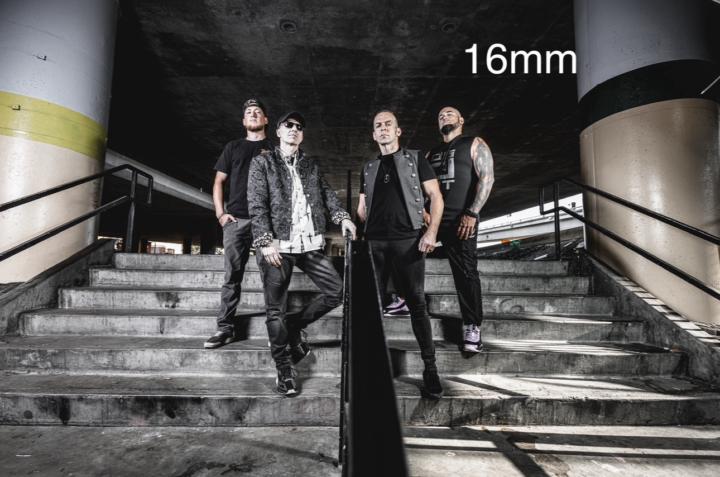Activity
Mon
Wed
Fri
Sun
Jan
Feb
Mar
Apr
May
Jun
Jul
Aug
Sep
Oct
Nov
Dec
What is this?
Less
More
Owned by Paul
A vibrant community for photographers and videographers to learn, grow, share, and master their craft - TOGETHER!
Memberships
Skoolers
182.5k members • Free
The Meta Control Room
101 members • $7/month
AI Film Marketing
233 members • $197/m
Ai Filmmaking
8.4k members • $5/month
Full-Time Creator
17.3k members • Free
7 contributions to The Shutter Society
Bad Lighting + Your Camera = Horrible Footage!
Lighting can make or break your video. Whether you're shooting inside, outside, or somewhere dark, bad lighting can mess up an otherwise great shot. Here are some common lighting problems you’ll run into—and how to fix them. 1. Low Light Environments - Issue: Grainy footage, loss of detail, poor focus. - Fix:Use fast lenses (with wide apertures like f/1.8 or f/2.8).Increase ISO carefully to avoid noise.Use portable LED lights or on-camera lights.Stabilize your camera for longer exposure times if needed. 2. Harsh Sunlight Outdoors - Issue: Overexposure, harsh shadows, and blown-out highlights. - Fix:Use ND (neutral density) filters to reduce light entering the lens.Shoot during golden hour (early morning or late afternoon).Use reflectors or diffusers to soften shadows. 3. Mixed Color Temperatures (Indoor + Outdoor Light) - Issue: Inconsistent white balance and unnatural skin tones. - Fix:Set a custom white balance based on your primary light source.Use gels to color-match artificial lights.Turn off competing light sources when possible. 4. Backlighting - Issue: Subject appears too dark or silhouetted against bright background. - Fix:Use fill light or bounce light to illuminate the subject.Increase exposure slightly while keeping highlight details in check.Use a reflector or white surface to bounce natural light onto the face. 5. Flickering Lights - Issue: Certain indoor lights (like fluorescents or LEDs) flicker at high shutter speeds. - Fix:Match your camera’s shutter speed to the local electrical frequency (usually 1/50 or 1/60).Avoid slow-motion under artificial light unless you’ve tested for flicker.Use high-quality, flicker-free lighting equipment. 6. Flat Lighting - Issue: No depth or dimension in the scene; looks dull or lifeless. - Fix:Use three-point lighting: key light, fill light, and backlight.Position lights at angles to create shadows and depth.Adjust light intensity and placement to shape the subject’s features.
4
0
Understanding Lens Compression and Wide-Angle Distortion
Let’s explore the concept of compression in photography Compression refers to the way a lens affects the perceived distance between objects in an image. This effect is largely influenced by the focal length of your lens. Wide-Angle Lenses and Distortion Wide-angle lenses (typically under 50mm) can create a unique effect on your subject and background. The shorter the focal length, the more exaggerated the perspective becomes. Lenses under 35mm are considered super wide-angle, and they can introduce noticeable distortion, especially near the edges of the frame. For example: - A 14mm to 16mm lens, commonly used in real estate photography, captures more of a space, making rooms appear larger than they are in person. This is why properties often look much smaller when viewed in real life. (Your eye sees at about 50mm) - These same lenses, however, can make people look distorted or unflattering if used for portraits, but can be artistic when throwing things in the foreground (like a foot or hand) for distorted depth perception. Creative Uses of Wide-Angle Distortion While distortion can be undesirable in some settings, it can also be used artistically. Many photographers use wide-angle lenses intentionally to add a gritty or dynamic feel to their images. For example, in band photography, distortion can add an energetic, edgy look that transforms a plain shot into something much more compelling. Key Focal Lengths to Know: - 16mm to 35mm: Wide-angle range (with 16mm being on the super wide side) - 50mm and above: Considered standard or telephoto, depending on the length Here are a few examples of wide-angle photos. Once I get a model in, I’ll post headshot examples at various focal lengths so you can have a visual of the differences.

1 like • Jul 17
Great breakdown of compression and how focal length affects perception Jen!—thanks for laying it out so clearly! I especially appreciate the reminder that wide-angle distortion isn’t bad—it just depends on how you use it. I think I am going to "Level Up" 🙂 my photography knowledge even thought I'm a Videographer. And I love it!
Any Gear is Good Gear — True and False!
A friend once told me, “Any gear is good gear!” And I would say this can be true — but let’s take a step back to determine what your goals are. What is it you’re trying to capture? 💡 The Real Deal: Jen and I both started with what we had. No fancy rigs, no massive budgets — just a love for visual storytelling. And trust me, that’s exactly where you should begin. The truth is GEAR CAN MATTER! What are you capturing? Because the right tools help you tell the story in the right way. 🎥 For example in videography: • Weddings? → Are you capturing “content” for the wedding, or are you capturing “a cinematic story”? Content means a phone is probably fine. But what if you want to capture a cinematic story? Well that’s going to require something like a gimbal for smooth flowing shots and a camera that can shoot 24FPS (frames per second) for a cinematic look along with the ability to capture LOG footage for the most dynamic range when coloring in post. You will also want a nice lens and possibly the ability to shoot in 120 FPS for beautiful slow motion. • Music videos? → you probably want cinema quality gear or something handheld with dramatic lighting and bold angles, maybe you want to use a fog or haze machine to add a level of intensity to your shoot. • Documentaries? → Lighting (maybe 3-point lighting setup, but definitely a key light) DSLR camera with the a high quality lens, and great audio capture. 🧠 Here’s the mindset: • If you don’t have all the gear mentioned above then start with what you’ve got. You may be surprised what your current gear can do if you really learn how to use it. • Learn the fundamentals: composition, lighting, framing, movement. • When you’ve mastered what you do have, then start building your kit with intention. • Each piece of gear should be able to capture your vision and should be something you’ll use. (trust me, We’ve made the mistake of spending $$$ on things we thought we would need only to discover we never used it outside of making sure it works. 😩
0 likes • Jul 16
The Canon C200 cinema camera is truly one of my favorite pieces of gear. And for a good reason! It shoots 4K RAW internally with Canon’s Cinema RAW Light, which means incredible image quality without needing extra gear. The Dual Pixel Autofocus is super reliable—fast & smooth. Paired with the Super 35mm sensor, I get that cinematic depth of field and solid low-light performance. The body itself is actually pretty lightweight and modular, so I can use it on a gimbal (which I have not done yet), handheld, or fully rigged which is how it's set up now. The built-in ND filters (up to 10 stops) make exposure control easy on the fly. I love the flexibility of recording in RAW or MP4, depending on the project. I just wish the C Fast cards weren't so darn expensive. And the dual XLR inputs are a must for pro audio even though I have been connecting my DJI wireless mics to it which actually work remarkably well! Overall, it’s a workhorse that delivers high-end results.
1-7 of 7
@paul-elkin-1793
I tell “stories” (aka shoot & edit chaos until it looks intentional).
Fueled by coffee, deadlines, and delusions of cinematic greatness!
Active 6d ago
Joined Jul 9, 2025


